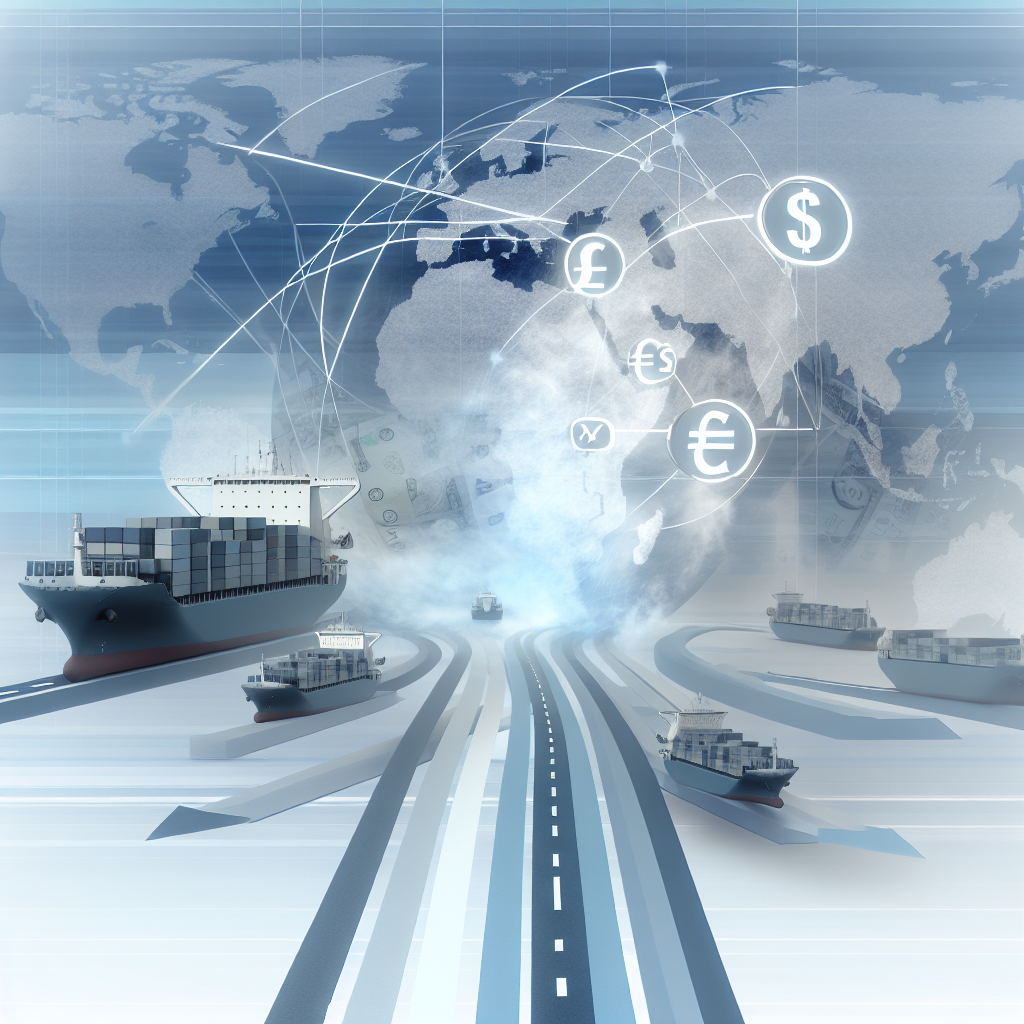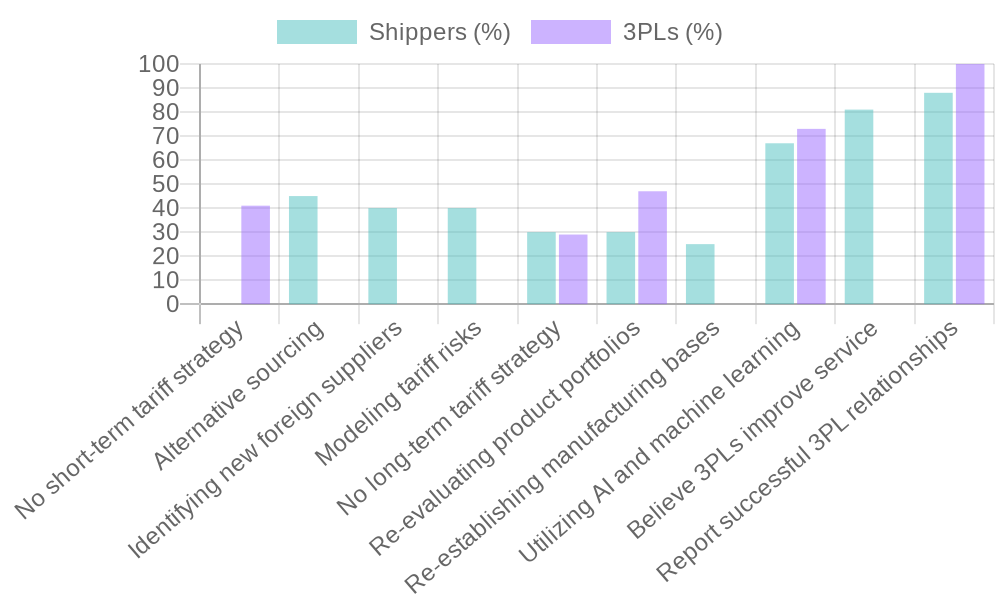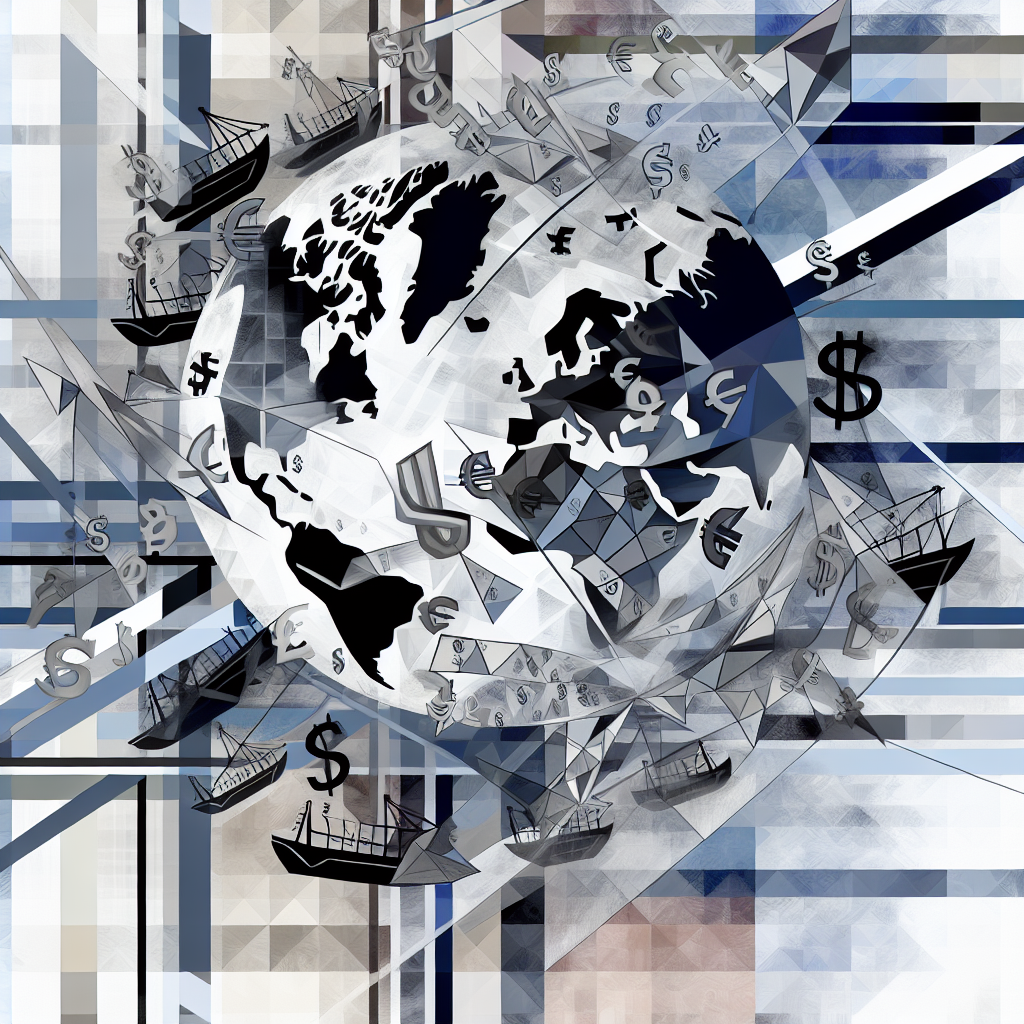In an era where the dynamics of global trade can shift overnight, shippers and third-party logistics providers (3PLs) find themselves navigating a complex labyrinth of challenges. The ripple effects of tariff uncertainty loom large, with impacts on supply chain resilience and logistics operations that transcend borders. As businesses grapple with fluctuating costs and evolving regulations, the demand for agility has never been more critical.
This landscape compels shippers to rethink long-held strategies while 3PLs scramble to maintain operational efficiency amid shifting targets. While many 3PLs lack robust plans to mitigate short-term tariff impacts on logistics, both shippers and logistics firms are increasingly recognizing the need for innovative solutions to remain competitive.
Addressing these tariff challenges, the path ahead remains fraught with complexity, making it imperative for stakeholders to adapt to ensure sustained success.
Tariff Strategies for Shippers and 3PLs Amid Uncertainty
Recent insights indicate that shippers and third-party logistics providers (3PLs) are actively adapting their strategies to cope with tariff uncertainties. A significant 45% of shippers are exploring alternative sourcing destinations, reflecting a proactive approach to mitigate risks associated with tariffs. Meanwhile, approximately 40% are in the process of identifying new foreign suppliers, and another 40% are modeling tariff risks to better understand potential impacts.
Conversely, a notable 41% of 3PLs admit to having no immediate plans to implement tariff-specific strategies. Yet, this group is also considering domestic sourcing, with an equal percentage (41%) planning to shift towards sourcing from domestic suppliers and 35% eyeing premium domestic options. This highlights a varied response among 3PLs, with many opting for strategies that involve strengthening domestic supply chains.
For long-term planning, shippers are re-evaluating their product portfolios, with 30% focusing on this area, while others consider relocating manufacturing bases (25%) or ramping up domestic manufacturing initiatives (20%). Alarmingly, 30% of shippers still lack long-term tariff strategies, indicating a critical area for development.
Overall, these findings underscore the importance of adaptability in the current landscape, with shippers actively seeking innovative sourcing strategies and 3PLs exploring domestic solutions to navigate the complexities brought on by tariff uncertainties. This strategic shift aims to enhance resilience and maintain operational efficiency in a fluctuating trade environment.
| Criteria | Shippers | 3PLs |
|---|---|---|
| AI Usage | 67% utilize AI and machine learning | 73% utilize AI and machine learning |
| Sourcing Strategies | 45% explore alternative sourcing | 41% consider domestic sourcing |
| Long-Term Planning | 30% lack long-term tariff strategies | 41% lack immediate tariff strategies |
| Adaptability Approach | Actively re-evaluating product portfolios and relocating manufacturing bases | Focuses on strengthening domestic supply chains |
| Perceived Value | 81% believe 3PLs improve service | Viewed as critical partners by shippers |
Expert Insights on Tariff Uncertainties
Mark Baxa, President of the Council of Supply Chain Management Professionals (CSCMP), and Ann Marie Jonkman, Vice-President of Global Industry Strategies at Blue Yonder, have provided valuable insights into how tariff uncertainties are impacting logistics and supply chain operations.
Mark Baxa’s Perspectives:
- Supply Chain Architecture and Responsiveness: Baxa emphasizes that tariffs significantly affect third-party logistics providers (3PLs) by necessitating changes in supply chain design and responsiveness. He notes that while the cost impact is notable, the primary challenge lies in adapting supply chain structures to accommodate new tariff landscapes [Truck News].
- Shift in Inventory Strategies: He observes a trend among shippers moving back to a just-in-time inventory model. This shift is driven by the desire to avoid higher inventory carrying costs associated with tariffs, highlighting a strategic response to mitigate financial impacts [Truck News].
- Long-Term Strategies and Risk: Baxa points out that a significant portion of shippers and 3PLs have no plans to adopt long-term strategies to address tariffs. He warns that this lack of preparation could leave companies more vulnerable to prolonged trade disputes, underscoring the importance of proactive planning [Truck News].
Ann Marie Jonkman’s Contributions:
- Role of Artificial Intelligence (AI): Jonkman highlights the growing adoption of AI and machine learning in the supply chain sector. She explains that AI is not only about quickly identifying and fixing issues but also about anticipating them. By learning patterns over time and enabling rapid, real-time adjustments, AI enhances operational efficiency and reduces labor costs [Truck News].
- Predictive Analytics: She emphasizes the importance of predictive analytics in detecting patterns and forecasting potential disruptions. This capability allows for proactive route optimization and strategic inventory positioning, enabling companies to address issues before they escalate [Truck News].
Both experts underscore the necessity for companies to adapt their supply chain strategies in response to tariff uncertainties. Baxa focuses on the structural and strategic adjustments required, while Jonkman highlights the technological advancements that can aid in navigating these challenges.
Impact of Sourcing Strategies on Shippers and 3PLs
Amidst tariff uncertainties, shippers and third-party logistics providers (3PLs) are reevaluating their sourcing strategies, weighing the benefits and challenges of domestic versus foreign sourcing.
Impact on Shippers:
- Diversification of Supplier Base: To mitigate risks associated with tariffs, shippers are expanding their supplier networks across multiple regions. This approach enhances agility and reduces dependency on any single country.
- Reshoring and Nearshoring: Some manufacturers are bringing production back to the U.S. or closer to end markets to avoid tariffs and improve supply chain control. This shift can lead to higher labor costs but offers benefits like reduced transportation expenses and faster response times.
- Cost Management: Shippers are optimizing cost structures by adjusting product prices, transferring costs to consumers where feasible, and employing hedging strategies to protect against currency and commodity price fluctuations.
Impact on 3PLs:
- Adaptation to Sourcing Shifts: 3PLs are adjusting their operations to accommodate clients’ changing sourcing strategies, whether through domestic or alternative foreign suppliers. This requires flexibility in logistics planning and execution.
- Investment in Technology: To manage the complexities introduced by tariff-induced sourcing changes, 3PLs are leveraging advanced technologies like AI and predictive analytics for demand forecasting and supply chain optimization.
Goals Behind These Shifts:
- Supply Chain Resilience: By diversifying suppliers and considering reshoring or nearshoring, companies aim to build more resilient supply chains that can withstand tariff fluctuations and other disruptions.
- Cost Optimization: Adjusting sourcing strategies allows businesses to manage costs effectively, balancing expenses related to tariffs, transportation, and labor.
- Enhanced Agility: Developing a flexible supplier base and investing in technology enable quicker responses to changing trade policies and market demands.
In summary, the shift in sourcing strategies due to tariff uncertainties is driven by the need for more resilient, cost-effective, and agile supply chains.

In conclusion, the evolving landscape of tariff uncertainties poses significant challenges for shippers and third-party logistics providers (3PLs), highlighting the necessity for rapid adaptation and strategic foresight.
As evidenced by the data and insights presented, a substantial number of industry players are exploring innovative sourcing strategies while leveraging advanced technologies like AI to enhance operational efficiency. However, the reality remains that a considerable portion of shippers and 3PLs are underprepared for both short-term and long-term tariff implications. This underscores the critical need for stakeholders in the logistics and supply chain sector to prioritize the development of comprehensive strategies that accommodate these uncertainties.
Engaging in continuous training, embracing innovative technologies, and fostering robust partnerships will be key drivers of success in a fluctuating market. Therefore, let us commit to taking proactive steps towards a more resilient and adaptable supply chain framework that meets the demands of today and prepares for the uncertainties of tomorrow.
Technological Advancements: AI and Machine Learning in Logistics
In today’s environment of tariff uncertainties, shippers and third-party logistics providers (3PLs) are using technology more to manage the complexities of global trade. Recent developments show how these companies use artificial intelligence (AI) and machine learning to improve efficiency and decision-making.
A significant 67% of shippers and 73% of 3PLs utilize AI and machine learning technologies. These tools help with predictive demand forecasting, cost management, and analytics to spot patterns and predict issues. For example, by optimizing routes and managing inventory strategically, companies can lessen the tariffs’ effects on operations.
A study shows that 46% of shippers and 3PLs use AI to analyze data, while 39% of shippers and 36% of 3PLs use AI for automating tasks. Also, 9% of shippers and 14% of 3PLs use AI instead of human judgment in decision-making, showing how technology changes logistics.
AI-driven systems have emerged in air cargo to tackle challenges like discrepancies between booked and actual shipment quantities. By combining machine learning predictions with mathematical optimization, these systems aim to minimize offloading costs while maximizing revenue potential.
Moreover, AI agents are becoming integral to logistics operations, enhancing decision-making capabilities. These digital workers support demand planning, truckload scheduling, freight bill auditing, and logistics cost analysis. Their ability to adapt to new variables and emulate human-like reasoning further amplifies their value in addressing the uncertainties introduced by tariffs.
As Ann Marie Jonkman, Vice-President of Global Industry Strategies at Blue Yonder, stated, “AI isn’t just about quickly identifying and fixing issues – it’s about anticipating them. By learning patterns over time and enabling rapid, real-time pivots, AI transforms intraday operations, driving greater efficiency and directly reducing labor costs.” This sentiment highlights the pivotal role that AI and machine learning play in redefining logistics and supply chain management amid tariff challenges.
These advancements signify a critical shift within the industry and highlight the necessity for shippers and 3PLs to adapt and innovate to maintain competitiveness amidst a fluctuating trade environment.
The Impact of Labor Shortages on Logistics Management
The logistics industry is currently faced with a significant challenge due to ongoing labor shortages that particularly impact skilled positions. Approximately 74% of U.S. employers in the transport and logistics sectors report difficulties in recruiting skilled talent, attributed to the aging workforce and dwindling interest among younger workers in logistics careers. This situation is compounded by perceptions of the industry as being physically demanding and lacking flexibility in work arrangements.
Labor shortages have direct consequences on operations, manifesting as shipping delays and increased costs, ultimately affecting overall service delivery. Therefore, addressing these challenges through effective workforce training and development is crucial for logistics firms.
The Role of Skilled Professional Training
Skilled professional training plays a vital role in enhancing operational efficiency during tariff uncertainties. Firms that implement comprehensive training programs can boost workers’ digital literacy, empowering them to use advanced technologies for improved decision-making processes. Additionally, investing in ergonomic equipment and offering flexible work schedules significantly enhances employee retention, fostering a more resilient workforce.
The need for trained professionals is particularly highlighted in light of the recent geopolitical frictions impacting traditional supply routes. Companies are realizing that employees equipped with strategic planning and risk management skills are essential for navigating complexities arising from tariff issues.
Furthermore, training focused on automation and digital tools not only streamlines operations but also mitigates the reliance on manual labor, which is increasingly necessary given the existing labor shortage. Thus, an investment in skilled training is not merely advantageous but essential for logistics management to thrive amidst current and future uncertainties in the market.

Statistical chart illustrating the percentage of shippers and third-party logistics providers (3PLs) adopting different approaches to manage tariff uncertainties. Key insights include that 41% of 3PLs do not have plans for short-term tariff strategies, while 45% of shippers are looking at alternative sourcing strategies. The chart also highlights that 67% of shippers and 73% of 3PLs utilize AI and machine learning, and many report successful relationships with their 3PL partners.
As we transition from insights shared by industry experts to understanding the tangible impacts of sourcing strategies, it becomes evident how these insights shape the real-world applications and decisions faced by both shippers and 3PLs. The challenges highlighted by Baxa and Jonkman not only reflect the complexities of navigating tariff uncertainties but also underscore the necessity of adapting sourcing approaches to enhance supply chain resilience.
In the following section, we will delve deeper into how these sourcing strategies are being altered in response to ongoing tariff pressures, and how both shippers and 3PLs are responding to the need for flexibility and responsiveness in their operations.
| Tariff Type | Description | Impact on Shippers | Impact on 3PLs |
|---|---|---|---|
| Short-term Tariffs | Immediate tariffs affecting current shipments | 45% exploring alternative sourcing | 41% lacking immediate tariff strategies |
| Long-term Tariffs | Anticipated tariffs affecting future costs and structures | 30% lack long-term strategies | 30% lack detailed plans for long-term tariffs |
| Domestic Sourcing | Sourcing products or materials locally to mitigate tariffs | 41% contemplating shift to domestic sources | 35% looking at premium domestic options |
| AI and Machine Learning Utilization | Use of technology to optimize logistics in response to tariffs | 67% utilizing AI for operational efficiency | 73% leveraging AI to enhance logistics processes |
Expert Quote on Sourcing Strategy Impacts
Mark Baxa, President of the Council of Supply Chain Management Professionals (CSCMP), noted the critical impact of tariffs on logistics operations, stating that “Tariffs are having a huge impact on 3PLs, not from a cost perspective but from a supply chain architecture and responsiveness perspective.” This highlights the necessity for shippers and 3PLs to adapt their sourcing strategies in an environment rife with uncertainties.
Mary Rollman, U.S. Supply Chain Leader at KPMG, added that organizations are increasingly shifting toward nearshoring, stating that businesses are “willing to accept higher operational costs within the Americas in exchange for tariff stability,” reinforcing the strategic moves being made amidst tariff challenges.
Additionally, as reported in a study, manufacturers are diversifying their sourcing to reduce dependency on single regions, employing a blend of U.S., North American, and international suppliers to enhance flexibility and resilience in their operations.
These perspectives emphasize the critical role that adaptive sourcing strategies play in successfully navigating the complexities of logistics amid tariffs and trade uncertainties.
